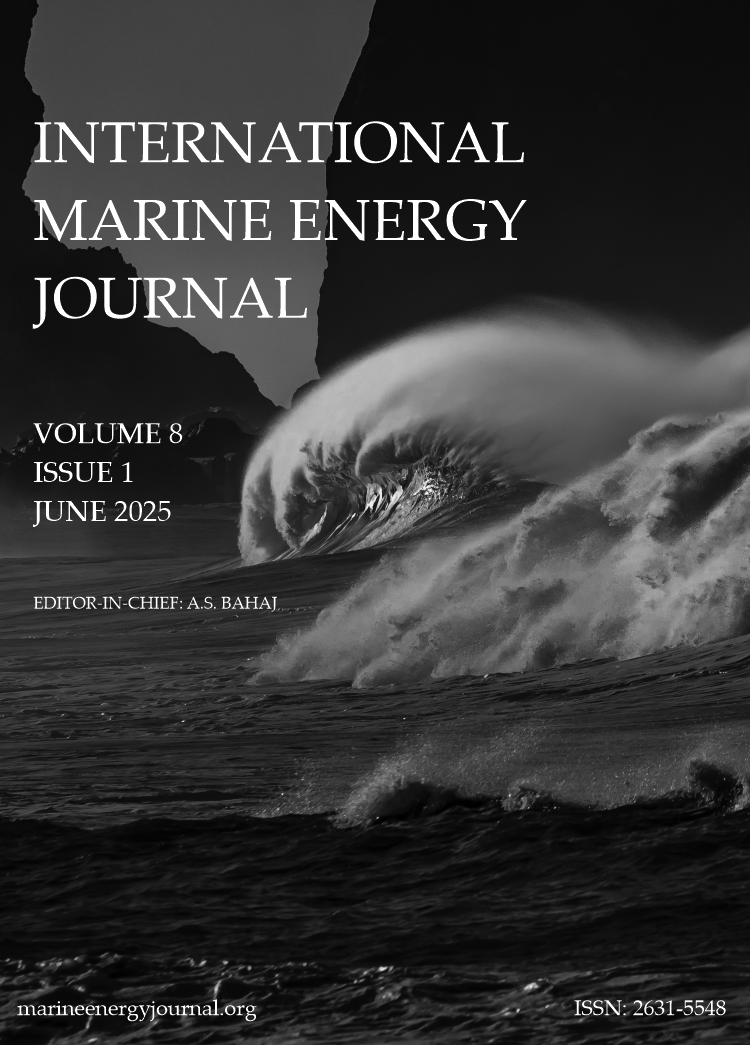Objective Functions for the Blade Shape Optimisation of a Cross-Flow Tidal Turbine under Constraints
DOI:
https://doi.org/10.36688/imej.8.47-55Keywords:
Cross-flow tidal turbine, vertical axis tidal turbine, active variable pitch, Optimization, CFDAbstract
Hydro-kinetic cross-flow tidal turbines (CFTT) are omni-directional and offer higher area-based power density compared to horizontal-axis tidal turbines, making them very attractive for tidal energy exploitation. However, the rotating motion around the vertical axis results in continuously varying angles of attack, causing alternating loads, which may lead to fatigue failure and structural damage. The OPTIDE Project addresses these challenges by implementing intracycle blade pitching to individually control the angle of attack, increasing the power coefficient CP and reducing structural loads. For this purpose a Darrieus turbine is designed with embedded actuators in each blade. Firstly a blade shape optimization will be conducted to fit the actuator at the quarter-chord position while ensuring sufficient thickness. The optimization procedure couples Computational Fluid Dynamics (CFD) with a Genetic Algorithm. The employed optimizer OPAL++ sets ten variables for each individual, which describe the hydrofoil shape, length and tip speed ratio (TSR). A smooth hydrofoil shape is generated from the variables, followed by an automatic mesh generation. Subsequently, numerical simulations of each individual at the desired TSR are conducted, while keeping the blade pitch angle constant. Simulation results provide the CP and stress acting on the turbine blades, which are the two optimization objectives (maximize CP while minimizing stress). This process is repeated during the optimization, aiming to determine the most suitable blade shape, that fits the actuator, and operating point (TSR) in a trade-off between CP and structural loads. This will lead to the increase of efficiency and a longer turbine lifetime.
Downloads
Published
How to Cite
Issue
Section
License
Copyright (c) 2025 Karla Ruiz-Hussmann, Pierre-Luc Delafin, Cyrille Bonamy, Yves Delannoy, Dominique Thévenin, Stefan Hoerner

This work is licensed under a Creative Commons Attribution 4.0 International License.
I the author/we the authors understand that I/we retain copyright over our article. I/we grant a licence to IMEJ to: publish my/our article under the terms of the Creative Commons Attribution (CC BY) License which permits use, distribution and reproduction in any medium, provided the original work is properly cited, and identify IMEJ as the original publisher.


